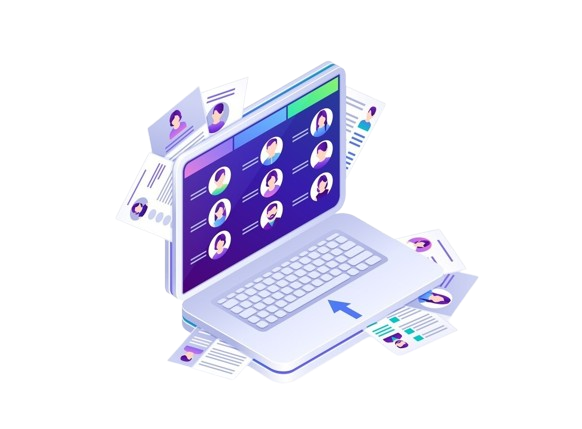The modern recruitment landscape requires a strategic approach to enhancing the candidate experience. 79% of talent leaders recognize that a positive employee experience plays a crucial role in attracting and retaining top talent. [1] Understanding and optimizing these critical interaction points can transform your recruitment outcomes. This article examines the complexities of enhancing recruitment by focusing on candidate journey touchpoints. By implementing these strategies and evaluating their impact, companies can revolutionize their recruitment processes and distinguish themselves in the competitive talent market.
What Are Candidate Journey Touchpoints
Candidate journey touchpoints represent every interaction a potential hire has with your organization throughout the recruitment process. These moments of contact shape perceptions, influence decisions, and ultimately determine whether top talent chooses your company. Each touchpoint, from the initial job posting discovery to final onboarding, offers an opportunity to enhance your employer brand and build stronger relationships with candidates.
Research indicates that candidates form lasting impressions within the first few interactions, making touchpoint optimization a key ingredient for recruitment success. Candidates informed of their application outcome are 3.5 times more inclined to apply for another position within the same company.[2]
Stages of Candidate Journey Touchpoints
- Pre-Application Touchpoints: Social media touchpoints, particularly LinkedIn and Glassdoor profiles, provide candidates with authentic glimpses into company culture. Maintaining consistent messaging across all platforms ensures candidates receive coherent brand experiences that build trust and interest.
- Application Stage Touchpoints: A well-designed career page and application form can boost completion rates by providing a streamlined, mobile-friendly process that respects candidates' time while collecting necessary information. Simplifying forms with progress indicators and submission confirmations enhances the user experience.
- Selection Process Touchpoints: Negotiation handling requires a balance between firmness and flexibility. Structured negotiation processes that acknowledge candidate concerns while maintaining budget parameters create win-win outcomes.
- Offer and Negotiation Touchpoints: Effective contract delivery methods and negotiation processes are crucial for increasing acceptance rates. Professional offers presentations with clear terms that show organizational value. Successful negotiations balance firmness and flexibility, addressing candidate concerns while adhering to budget constraints, ultimately leading to win-win solutions.
- Onboarding Touchpoints: Seamless transitions from recruitment to onboarding enhance the candidate journey and employee experience. Effective pre-boarding communications, which include necessary documentation and first-day expectations, help reduce new employee anxiety and improve retention rates.
Consider the following key touchpoints:
Steps to Implement Effective Candidate Journey Touchpoints
Step 1: Map Your Current Candidate Journey
Document every existing touchpoint from job posting to onboarding completion. Through detailed journey mapping, identify gaps, redundancies, and opportunities for improvement. Visual representations help teams understand the complete candidate experience while highlighting areas for optimization.
Step 2: Define Ownership per Touchpoint
Assign clear responsibility for each touchpoint to specific team members or departments. This ensures accountability and consistent execution across all candidate interactions. Define escalation procedures for complex situations that require additional expertise.
Step 3: Audit and Optimize Key Touchpoints
Evaluate current touchpoint effectiveness through candidate feedback and performance metrics. Focus optimization efforts on high-impact areas that directly influence candidate decisions. Implement CV redaction processes to ensure fair evaluation while protecting candidate privacy.
Step 4: Automate and Personalize Where Possible
Balance automation efficiency with personal touch requirements. Automated systems handle routine communications while preserving human interaction for moments that foster relationship-building. Modern ATS platforms allow for sophisticated automation while maintaining a personalized touch.
Step 5: Track KPIs per Touchpoint
Establish measurable metrics for each touchpoint to monitor effectiveness and identify opportunities for improvement. Key performance indicators include response times, candidate satisfaction scores, conversion rates, and feedback quality ratings.
Step 6: Embed Feedback Mechanisms
Implement systematic feedback collection at crucial journey points to understand candidate perspectives and identify improvement areas. Regular feedback analysis drives continuous optimization and demonstrates a commitment to candidate experience excellence.
Step 7: Train Your Hiring Teams
Ensure all team members understand touchpoint importance and execution standards. Regular training updates maintain consistency and incorporate best practices as recruitment methodologies evolve.
Essential Tools and Solutions
Manatal ATS Advantages: The Candidate Matches feature, together with pipelines, automated communications, and a user-friendly application interface, forms a cohesive framework for managing and enhancing every touchpoint of the candidate experience in Manatal.Manatal's Candidate Matches feature lets you track each candidate’s progression through the hiring process, from initial submission to being hired. It records important timestamps like "Added to Job on", "Submitted on", "Interviewed on", "Received Offer on", and "Hired on".

{{cta}}
Free Resources for Getting Started
- Google Forms: Create structured feedback collection surveys for post-interview and post-offer insights
- Miro: Develop visual candidate journey maps that highlight touchpoint relationships and optimization opportunities
- Calendly: Implement professional interview scheduling that accommodates candidate preferences while maintaining efficiency
Best Practices for Touchpoint Optimization
Personalize Communication at Every Stage
Use names, reference past interactions, and tailor messages to show genuine interest. Automate with personalization tokens for efficiency.
Maintain a Consistent Employer Brand
Ensure visuals, tone, and messaging reflect company culture and values across all touchpoints.
Respond Fast, Especially Post-Interview
Follow up within 24–48 hours post-interview to show respect, maintain interest, and stay ahead of competitors.
Measure and Act on Candidate Feedback
Collect feedback at key stages, analyze patterns, and act to improve the recruitment experience.
Measuring Candidate Journey Touchpoints
Understanding the quantified impact and metrics of candidate journey touchpoints is crucial for optimizing the recruitment process. Each touchpoint throughout the candidate journey, from initial job posting to onboarding, can be measured to evaluate its effectiveness and improve candidate nurturing.
Key Metrics to Consider:
By analyzing these metrics, HR professionals can refine each touchpoint to create a smoother and more engaging candidate journey. This ensures a positive impression of the organization, enhancing employer branding and increasing the likelihood of attracting top talent. Keeping a close eye on these metrics helps in continuously improving the recruitment strategy.
Conclusion
Successful candidate journey touchpoint management requires strategic planning, consistent execution, and continuous optimization. Professional recruiters who master these elements create competitive advantages that attract top talent while building strong employer brands. Remember that candidate journey optimization is an ongoing process that requires regular assessment and adjustment. Stay attuned to candidate feedback, industry trends, and technological developments to maintain touchpoint effectiveness and competitive positioning in the evolving recruitment landscape.
Citations:
[1] LinkedIn
[2] Testify
[3] Standout-CV
[4] Withe
[5] AIHR





.png)






















.webp)

.webp)

.webp)
